German Fighter Messerschmitt Me-210 Aviation Training W.E.F.T.U.P. ID Posters
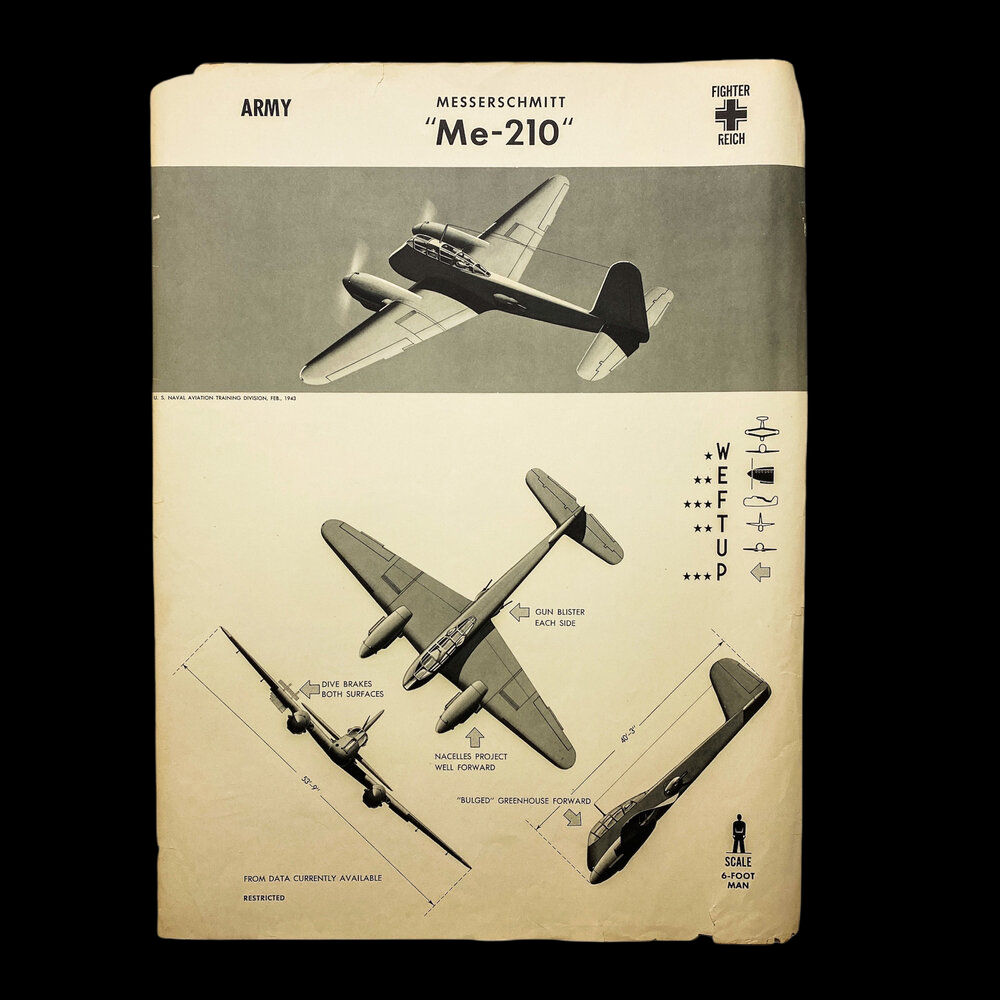
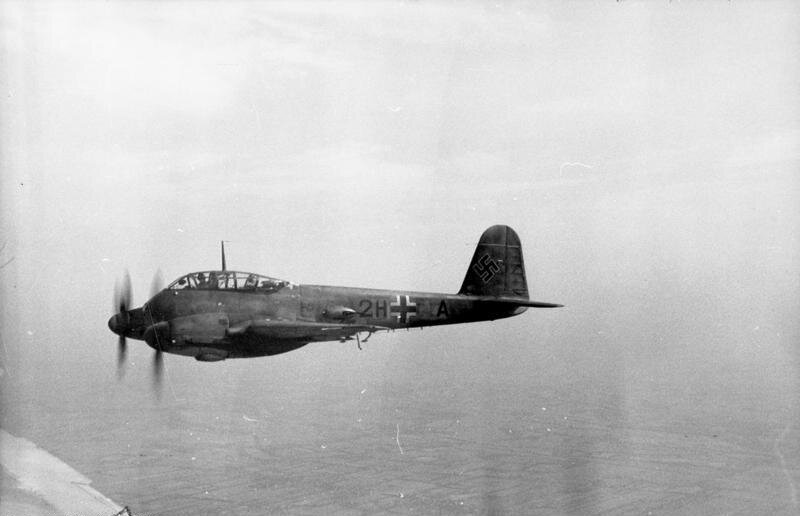
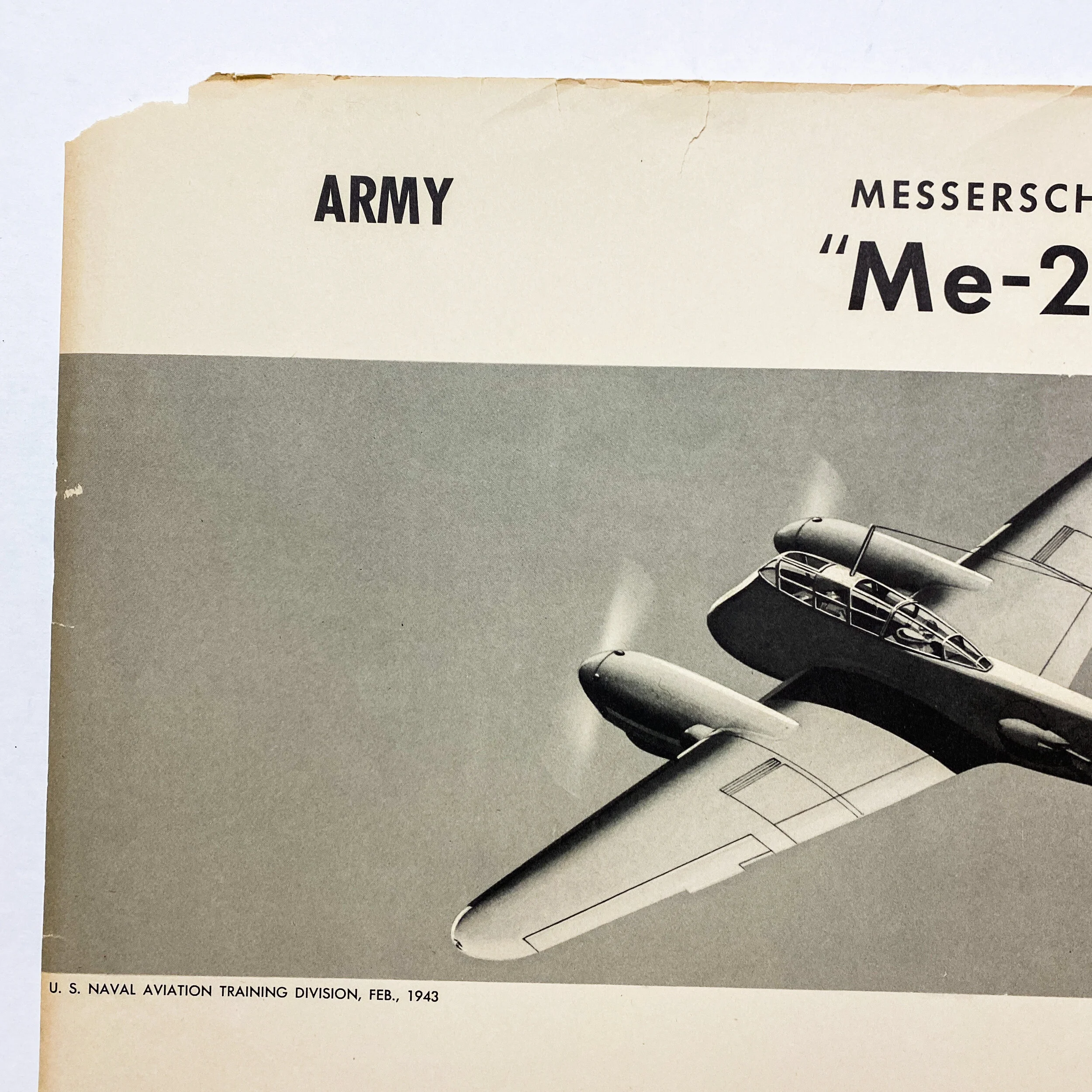

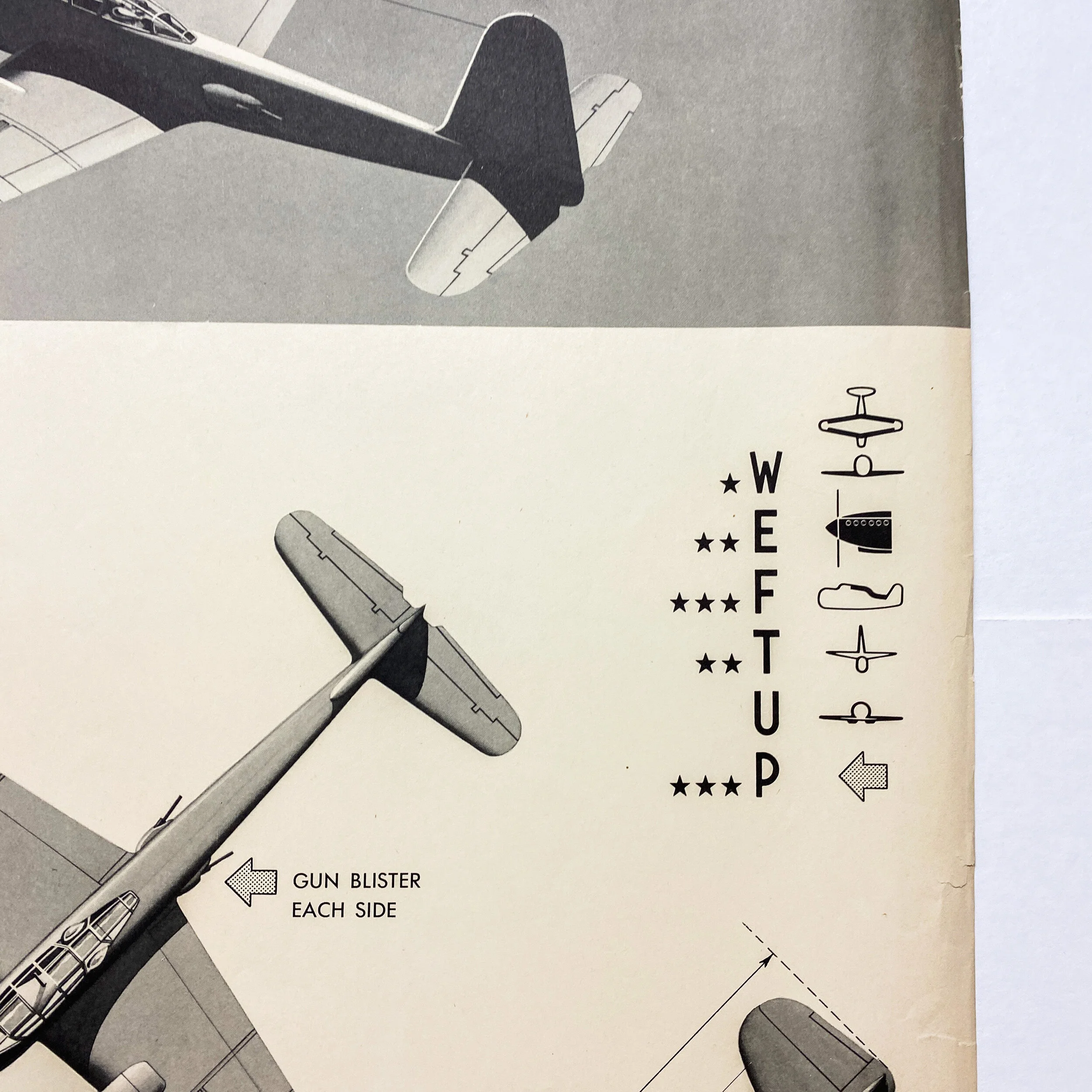

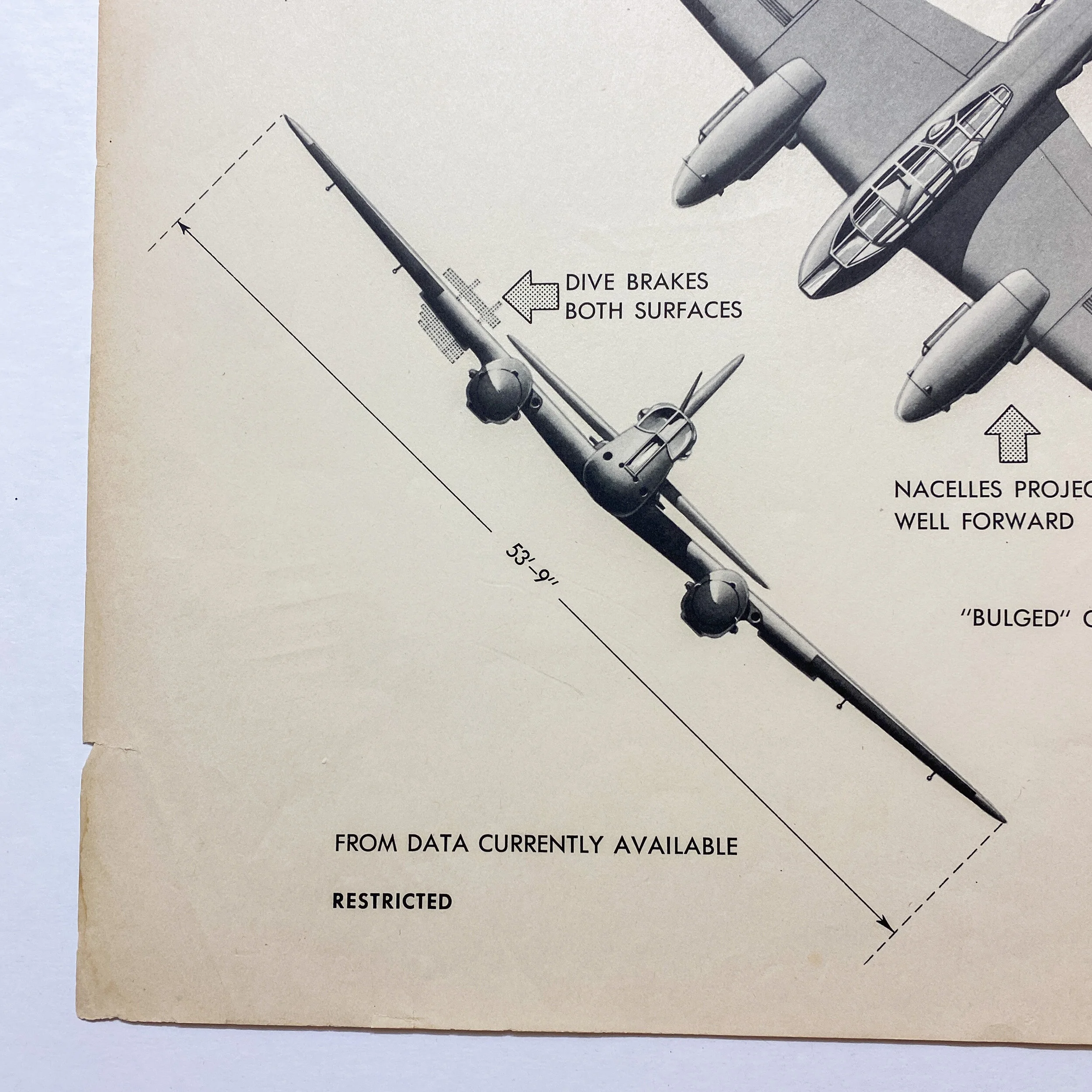
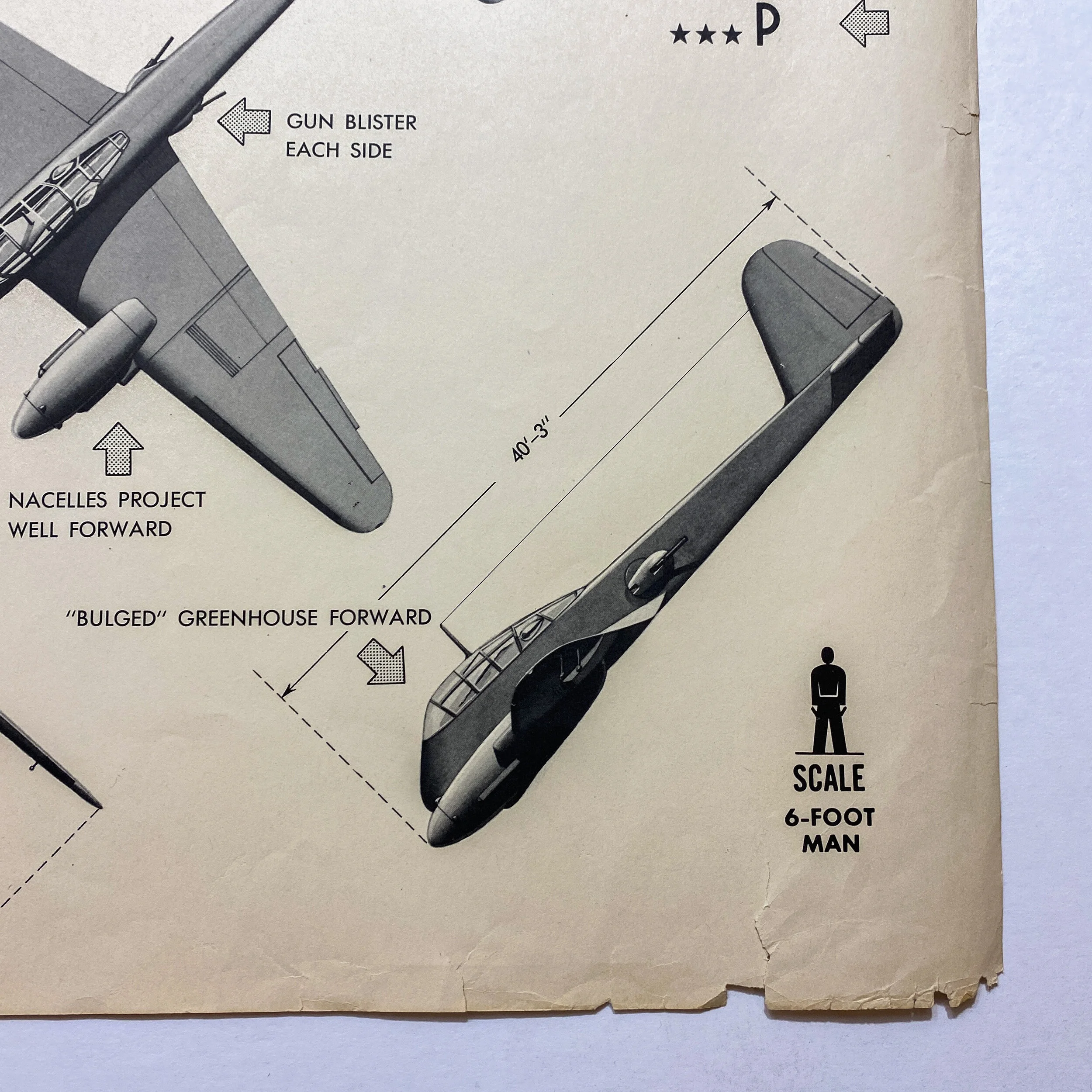
German Fighter Messerschmitt Me-210 Aviation Training W.E.F.T.U.P. ID Posters
Size: 19 x 25 inches
This original ‘RESTRICTED’ aircraft identification poster was published by the U.S. Naval Aviation Training Division Feb. 1943. This poster was posted as a training tool as well as an in theater ID poster to help U.S. and other Allied pilots, bomber crews and Naval personal to identify Allied and enemy aircraft. W.E.F.T.U.P. or Wing, Engine, Fuselage, Tail, Undercarriage, Peculiarities was a system set up for the purpose of aircraft identification and recognition.
World War II saw some of the first introduction of these aircraft ID poster to prevent friendly fire and more accurate plane recognition in combat. It was believed these posters alone could save countless lives from friendly aircraft-on-aircraft or friendly anit-aircraft fire. These posters also could cut down precious second pilots, bomber gunners, and naval gun crews would have to ID a plane flying towards them intern saving their lives by shooting first.
Each poster provides the silhouettes, dimensions, and relevant information to educate both air and ground personnel in aircraft identification. Immediate identification of aircraft, friendly or not, was essential in order for the observer (whether in the air e.g., pilot, gunner, or patrol observer, or on the ground, e.g., anti-aircraft crew) to determine his next course of action (e.g., acknowledge, attack, evade, or report). Each poster details a large clean sky and background image of the specified aircraft located as the main top imagine on the poster. It also contains important ‘peculiarities’ such as where certain gun emplacements are located, other special aircraft features, as well as wing and length measurements.
German Fighter Messerschmitt Me-210:
The Messerschmitt Me 210 was a German heavy fighter and ground-attack aircraft of World War II. Design started before the war, as a replacement for the Bf 110. The first examples were ready in 1939, but they proved to have unacceptably poor flight characteristics due to serious wing planform and fuselage design flaws. A large-scale operational testing program throughout 1941 and early 1942 did not cure the type's problems. The design entered limited service in 1943, but was almost immediately replaced by the Messerschmitt Me 410 Hornisse ("Hornet"). The Me 410 was a further development of the Me 210, renamed so as to avoid the 210's notoriety. The failure of the Me 210's development program meant the Luftwaffe was forced to continue operating the Bf 110 after it had become outdated, despite mounting losses.
The Bf 110 carried its ordnance externally beneath the wings and fuselage, but this created drag; the Me 210 avoided this problem by housing the bombs in an enclosed bomb bay, in the nose of the aircraft. The Me 210 could carry up to two 500 kg (1,100 lb) bombs. The Me 210 had dive brakes fitted on the tops of the wings, and a Stuvi 5B bombsight ("Stuvi"-Sturzkampfvisier, dive-bombing sight) in the nose, for shallow-angle dive bombing. In the fighter role, the bomb bay was fitted with four 20 mm cannons.
Deliveries to frontline units started in April 1942, and the plane proved to be even less popular with pilots. Production was stopped at the month's end, by which time only 90 had been delivered. Another 320 partially completed airframes were placed in storage. In its place, the Bf 110 was put back into production. Although the Bf 110 was now equipped with the newer DB 605B engines and greater firepower, it was still an outdated design.
The Luftwaffe started receiving their Hungarian-built planes in April 1943, and the Hungarians in 1944; when they entered service they were more than satisfied with them. Production ended in March 1944, when the factory switched over to produce the Bf 109G. By that time, a total of 267 Me 210C had been built, 108 of which had been given to the Luftwaffe. They operated mostly in Tunisia and Sardinia, and were quickly replaced by the Me 410.